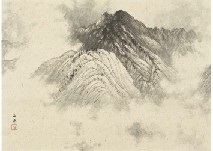
Our focus was on Limestone, one of the sedimentary rocks. We were exploring how the calcium in shells, when heated and/or compacted cause rock to form.
In our first experiment we put shells in vinegar. The acetic acid in vinegar went to work on the alkaline (base) of the shells (calcium)
Sea shells are made of calcium carbonate The vinegar breaks down the carbon, turning it into carbon dioxide. We saw the carbon dioxide bubbling around the shells. It blew up the balloon!
 |
| We placed shells in a bottle with vinegar. As carbon dioxide was released from the shells it blew up the balloon! |
In the youtube channel, Primitive Technology, a type of cement was made by burning shells. This has the same effect, burning off the carbon. Carbon dioxide remains and this can then be ground up and turned into a cement like product. We used Pāua shells as a mould. It is great to do hands on activities to make discoveries in science.
 |
| The raw shells were cooked in the pizza oven. |

 |
| This is our Limestone made from burnt, ground up shells. It is in a Pāua shell mould. |
| This diagram explains the what is happening when rocks form. |
No comments:
Post a Comment